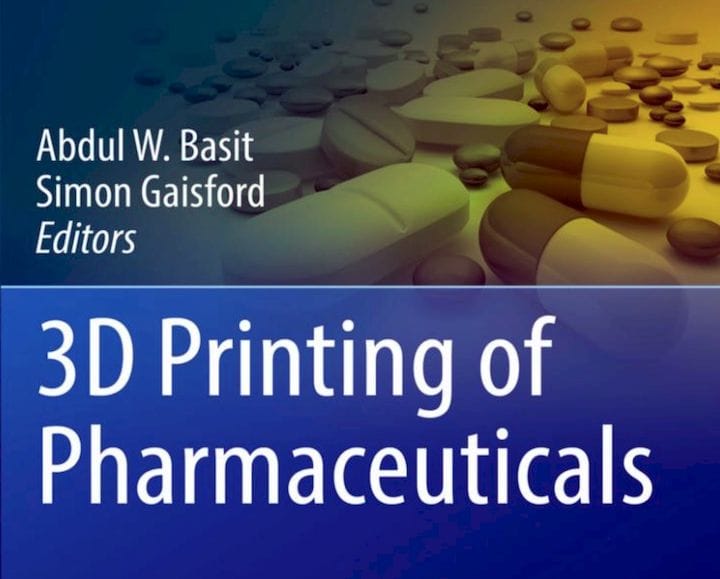![3D Printing of Pharmaceuticals [Source: Amazon]](https://fabbaloo.com/wp-content/uploads/2020/05/image-asset_img_5eb0a45e582aa.jpg)
This week’s selection is “3D Printing of Pharmaceuticals” by Abdul W. Basit and Simon Gaisford.
3D printed pharmaceuticals is not a topic we’ve written much about, but it is an emerging technology. Our aversion has perhaps been due to the perception that 3D printing produces a “part” of useful geometry. However, 3D printed drugs don’t really do that: a pill is a pill is a pill.
The geometry is much the same from one 3D printed pharmaceutical to another 3D printed pharmaceutical.
What’s different is the composition of that “part”.
While most 3D prints today are made from mono-materials, or perhaps a couple of materials, 3D printed pharmaceuticals are quite different. Instead of varying the geometry to achieve unique items, the technology is to vary the composition of the item.
Drugs taken internally by patients are by definition the most personal item possible. The composition of the ingested drugs is of critical importance to the patient, and requirements vary from person to person as much as physical bodies vary. In other words, there is a precise mix and amount of drugs required for each individual for a given purpose, and even that can vary over time, as the individual’s body chemistry and situation changes.
Thinking of drugs in this way is quite different from today’s drug regimes in which the physician is quite constrained as to what they can prescribe. Their tools include:
-
Dose per ingestion
-
Frequency of dose taking
-
Duration of dose application
And that’s about it.
But what if one could prescribe a complex sequence wherein the drugs’ application could take on a curve, with, for example, a low dose at the beginning and a spike a few days later? If you could control the amount of drug in each application precisely, then you could enable many different drug regimes that are currently impossible without a supervised stay at an institution.
This is the promise of 3D printed pharmaceuticals.
One way you can learn about this new technology is to read the book “3D Printing of Pharmaceuticals”, which includes a series of technical articles written by multiple experts in this new technology.
Sections include:
-
Emerging applications in healthcare
-
3D printing technologies, implementation and regulation
-
Binder jet printing in pharmaceutical manufacturing
-
History, developments and opportunities of stereolithography
-
Powder bed fusion: the working process, current applications and opportunities
-
Fused deposition modeling: advances in engineering and medicine
-
The role of semi-solid extrusion printing in clinical practice
-
4D printing opportunities in pharmaceutics
-
Medical applications of 3D printing
We will no doubt hear a lot more about 3D printed pharmaceuticals in the future as professionals discover how they may best applied to real-life situations. Before then, consider reading this book.
Via Amazon











This week’s selection is “3D Printing Projects” by Dorling Kindersley, a.k.a. “DK”.